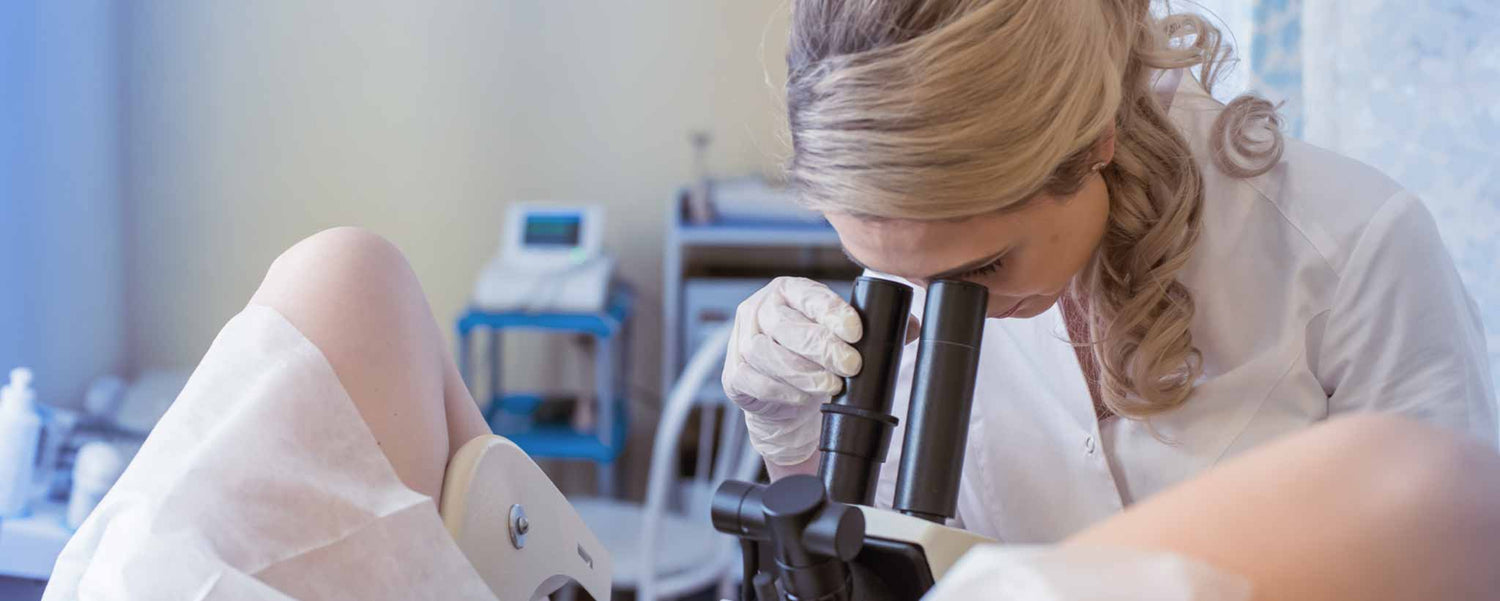Publish 19 May 2022
When a cervical endoscopy of the uterus reveals a polyp, the patient braces herself for an explanation of three types of hysterectomy.
Continuation of the prior article
Hysteroscopy
Satisfied with her ob-gyn visit, Arlene awaits her hysteroscopy. Dr. Sarah has given her an appointment within the first week after her menstrual period. The appointment letter contains instructions before hysteroscopy, including a blood test and a pregnancy test.
Arlene remembers Dr. Sarah’s words, “Hysteroscopy should be avoided during pregnancy. Use contraceptives in case of intercourse.”
As Arlene is reading her guidelines carefully, her landline phone starts to ring. It’s a call from Evelyn, her best friend. Apart from Evelyn, she receives very few calls on her landline. Her other callers are mostly spammers who constantly urge her to buy solar panels, vacation homes, or extended warranties.
When at home, Evelyn always calls on her landline instead of her mobile phone. Maybe this is the reason she still has the antiquated communication device. “Hi, honey. How are you doing?” asks Evelyn in an exhilarating tone.
Hearing Evelyn’s voice lifts her mood. She responds gleefully, “I’m good. How are you?”
“I am great. I want to ask you about your hysteroscopy. When is it?” asks Evelyn.
“It’s tomorrow,” answers Arlene.
Evelyn sounds resolute as she says, “I’ll ask someone to cover for me at work so I can go with you.”
“Really?” Arlene is elated after hearing Evelyn’s offer, “Thank you, Evelyn. I’m glad you are coming. This will be a great moral support for me.”
“Don’t thank me. That’s what friends are for,” says Evelyn as the conversation ends.
The next morning, Arlene and Evelyn reach the ob-gyn clinic.
Dr. Sarah greets them with a smile, “How are you both?”
“We’re good. How are you, Doctor?” Evelyn is quick to respond.
“I’m fine, and glad you showed up, Arlene.” Dr. Sarah turns towards Arlene.
“Are you ready for your hysteroscopy exam?” asks Dr. Sarah while directing her assistant to prepare for the hysteroscopy procedure.
“Yes, Doctor. I’m ready,” says Arlene with determination. She wants to further clarify, “Will I experience pain during this visit?”
“It’s a simple diagnostic procedure. We just want to see if there is any problem. Most patients feel no or mild pain. If you do feel pain, let me know. We’ll pause immediately,” replies Dr. Sarah in a caring tone.
“You will be fine, honey. Just relax,” adds Evelyn.
Arlene puts forward another question.
“Will I be awake during the hysteroscopy?”
Dr. Sarah answers with a soft smile, “Yes, you will be awake. Diagnostic hysteroscopy is usually done under local or regional anesthesia.”
Dr. Sarah tells Arlene to change into a patient gown. The attendant nurse asks Arlene to put her feet in stirrups at the end of the table. Dr. Sarah instructs the nurse to give a mild sedative to keep Arlene relaxed during the procedure.
“How long will it take?” Arlene asks Dr. Sarah.
“This usually lasts just 5–30 minutes. So, you’ll be out of here in a jiffy. You can even go to work later today if you want,” says Dr. Sarah.
Dr. Sarah begins the hysteroscopy. A monitor is present in front of her, which displays the internal images of the uterus. While moving the camera with her hand, Dr. Sarah is keenly looking at the monitor. She pauses as she sees a large polyp on the screen. She takes a biopsy sample from the polyp to further probe it.
Later, she informs Arlene about her current findings and recommendations, “You have a major polyp inside your uterus. I’m requesting a few more tests to confirm its nature. When the results come in, we’ll further discuss our options.”
Dr. Sarah recommends transvaginal ultrasounds (TVUS), MRI, and CT scans. She also sends biopsy samples to a pathology lab for further sampling.
Cancer Diagnosis
Almost ten days elapse as Arlene awaits her results. She receives a call from Dr. Sarah, asking her to come in. Arlene informs Evelyn about the call. She agrees to accompany her. The next day, they reach Dr. Sarah’s office. She is holding Arlene’s oncology test reports in her hand. After greeting her pleasantly, she begins the conversation.
“I have your test reports back,” informs Dr. Sarah sternly.

Arlene observes the expressionless face of Dr. Sarah and shares her worries, “I’m not getting positive vibes, doctor. Should I be worried?”
“There is good and bad news for you. The polyp that I found in your uterus is cancerous. The good news is that it appears localized,” says Dr. Sarah.
“Oh, doctor. That’s what I was worried about,” Arlene turns towards Evelyn with a grim look on her face and says, “I’ve got cancer.”
Evelyn holds Arlene's hand to comfort her friend, saying, “Don’t worry, honey. You’ll be all right. I know there’s a solution to this. Isn’t there?”
“Yes, there is.” Reverting to her original recommendation, Dr. Sarah continues, “You’ll need a hysterectomy.”
Thoughts of an uncertain future envelop Arlene’s flushed face.
“Let me explain the three different types of hysterectomies. Subtotal hysterectomy involves the removal of the uterus while leaving the cervix in place. This procedure is risky, as it can later lead to cervical cancer,” Dr. Sarah pauses for a brief moment.
Both Evelyn and Arlene are listening attentively.
Dr. Sarah continues, “Total hysterectomy involves the removal of both the uterus and cervix. The third one is radical hysterectomy, which includes the removal of the entire uterus, cervix, top of the vagina, and fatty tissue.”
Trying to maintain composure during stress and curiosity, Arlene replies, “I thought all hysterectomies were the same. Which type are you recommending?”
“For the best odds at preventing cancer from spreading, a radical hysterectomy is advisable. The extent may change based on findings during surgery. If it were fibroids or endometriosis, a subtotal hysterectomy may suffice,” answers Dr. Sarah.
“Depending on what I find, I generally remove the fallopian tubes (salpingectomy) and ovaries (oophorectomy) if there’s cancer there, a woman is post-menopausal, or peri-menopausal.”
“How long can I delay the surgery?” asks Arlene.
“I recommend as early as possible. A longer wait can sometimes lead to negative outcomes,” says Dr. Sarah.
“Can I still have children in the future by freezing my eggs?” asks Arlene with optimism in her eyes.
“Yes, we can harvest your eggs before the hysterectomy. We’ll freeze them. You can later have your biological children through surrogacy,” Dr. Sarah explains.
Arlene asks, “Will I have a visible scar?”
“Surgery methods include laparoscopic, vaginal, or abdominal. We will be performing a laparoscopic hysterectomy. This is a minimally invasive technique. You’ll have tiny incisions at 3–4 places. With this less painful approach, you’ll have a fast recovery,” says Dr. Sarah.
Evelyn jumps into the conversation and asks, “Will you remove her ovaries as well?”
“In most premenopausal women, we leave healthy ovaries in place. The ovaries play a part in sexual desire and pleasure. They can also produce hormones that help protect against health problems such as osteoporosis.
“In cases having a higher risk of ovarian cancer based on family history, we remove ovaries as well,” Dr. Sarah explains comprehensively and asks Arlene whether any of her family members had cancer.
“I don’t think so. I believe I’m the first,” Arlene ends the sentence with a sheepish smile.
Dr. Sarah provides further pre-surgical guidance, also discussing the emotional aftermath of the hysterectomy. She stresses the importance of physical and post-surgical emotional support.

To comfort Arlene, Evelyn says, “This has been much to absorb, Arlene. But you have handled the news quite well. As a strong woman, you overcame many obstacles in your professional career. I’m confident that you will be just as victorious during this one.”
Evelyn agrees to go with her during the hysterectomy and stay with her at home during recovery. She looks at Arlene with a smile filled with the warmth of love and teases her, “Prepare to get tired of me helping you out of bed, fixing your hair, preparing meals, and annoying you with conversation while keeping you company.”
“With a positive attitude and your assistance, I’m ready to conquer cancer. Thank you for being a true friend,” Arlene concludes.
To support the writing of useful articles about oncology, ClinicalPosters sells human anatomy charts, scientific posters, and other products online. You may sponsor specific articles, become a ClinicalNovellas Member, or remit a small donation.
ClinicalPosters sells human anatomy charts, scientific posters, and other products online to offset expense of the writing useful articles about oncology. Slide extra posters into DeuPair Frames without removing from the wall.
Show your support by donating, shopping for ClinicalPins, becoming a ClinicalNovellas Member, or leaving an encouraging comment to keep the research going.
To support the writing of useful articles about oncology, ClinicalPosters sells human anatomy charts, scientific posters, and other products online. You may sponsor specific articles or remit a small donation.
ClinicalPosters sells human anatomy charts, scientific posters, and other products online to offset expense of the writing useful articles about oncology. Slide extra posters into DeuPair Frames without removing from the wall.
ClinicalPosters sells human anatomy charts, scientific posters, and other products online. You may remit a small donation or become a ClinicalNovellas Member.
You can support the writing of useful articles about oncology by sponsoring specific articles, becoming a ClinicalNovellas Member, or remitting a small donation.
UPDATED 2025 – This article reflects editorial revisions since its original publication.
FAQ: Diognostic and surgical procedures for uterine cancer
What is a hysteroscopy?
A diagnostic hysteroscopy is a 10–30 minute laparoscopic inspection of the uterus. A operative hysteroscopy can include the use of small surgical instruments to perform procedures like polyp or fibroid removal.
Should someone accompany a patient for a hysteroscopy?
After following the preparation instructions, the diagnostic procedure uses a local anesthetic. There is no physical need for patient assistance, but emotional support by a friend may be comforting.
What happens during a D&C (dilation and curettage)?
This diagnostic procedure is similar to, but more invasive than the hysteroscopy. Performed under anesthesia, the patient should be accompanied by a driver. Recovery takes 24–48 hours.
What are the three types of hysterectomy?
A subtotal hysterectomy involves the removal of the uterus while leaving the cervix in place. A total hysterectomy involves the removal of both the uterus and cervix. A radical hysterectomy includes the removal of the entire uterus, cervix, top of the vagina, and fatty tissue.
Is childbirth possible after a hysterectomy?
Since an embryo develops within the uterus, it’s removal prevents gestation. Yet pre-op egg removal and freezing opens the option of surrogacy.
This style of evocative medical writing inspired ClinicalNovellas.









